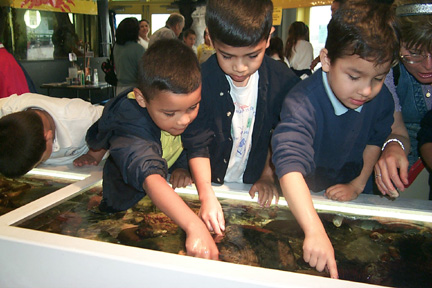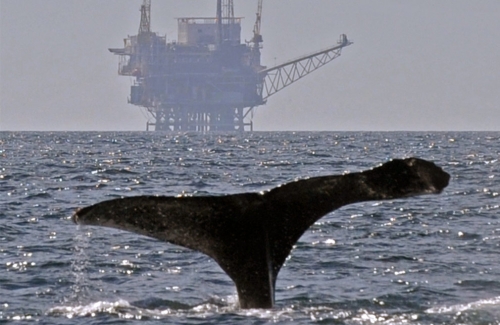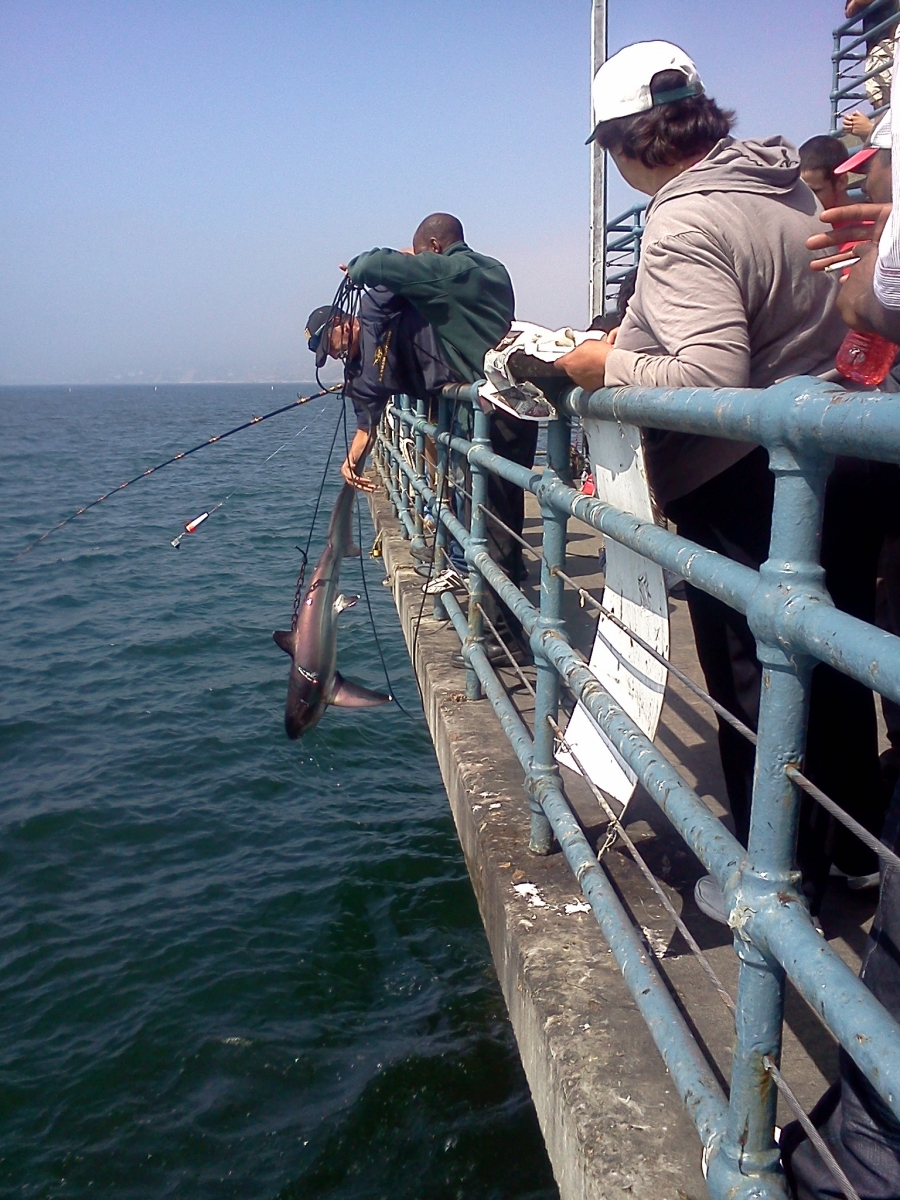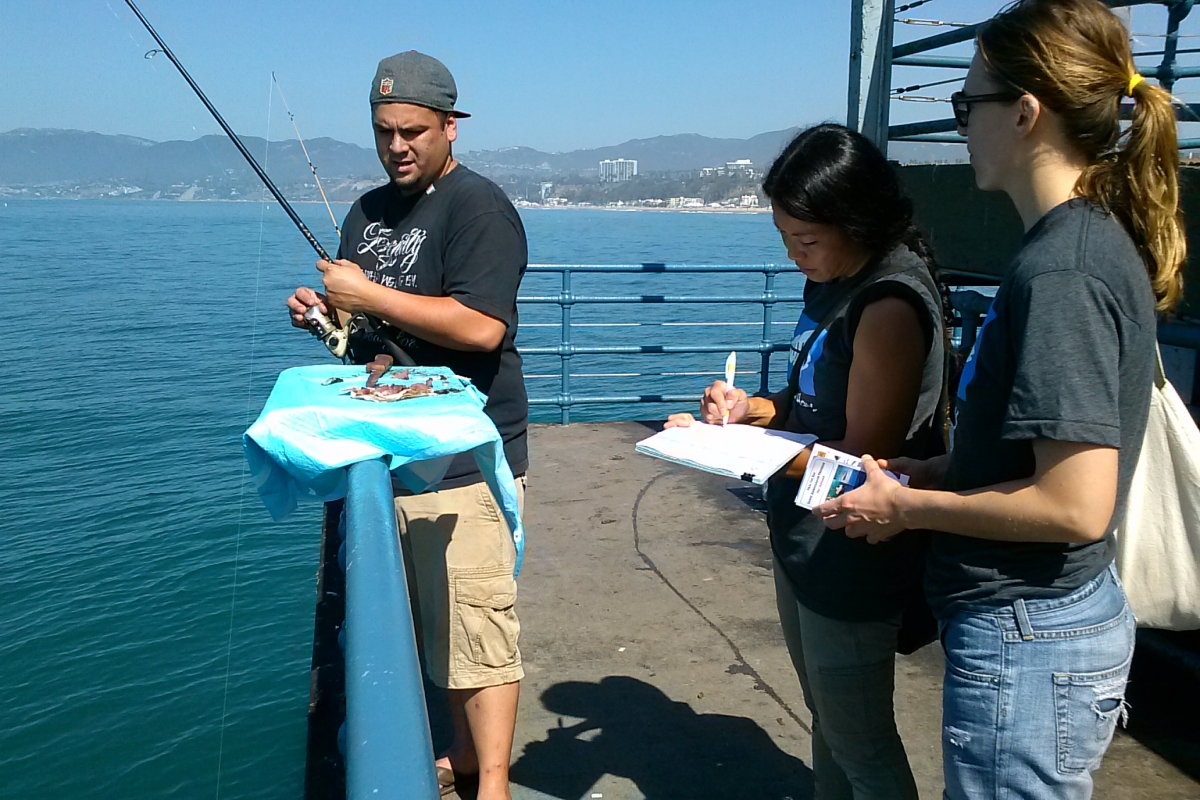Dirty 30? Hardly!
Southern California’s coastline, beaches and inland watersheds are cleaner than ever, thanks to Heal the Bay’s 30 years of effective, passionate, science-driven environmental advocacy.
While we’re proud of our accomplishments over the past three decades, keeping our waterways clean and healthy requires constant vigilance and tenacity. While we would be thrilled if straight-A’s on our Beach Report Card gave us a reason to close our doors for good, the reality is that there’s enough work to do to keep us in business for at least another 30 years. (Probably more like 300.)
For now, however, get that scrolling finger limbered up. As we mark the 30th anniversary of our incorporation 30 Februarys ago, it’s the perfect time for a Heal the Bay history lesson!
2014
- In a major victory for Heal the Bay and ocean health, Sacramento passes SB 270, the long-awaited statewide ban on single-use plastic bags. An estimated 13 billion plastic bags will be kept out of the waste stream because of this groundbreaking legislation.
- Heal the Bay led the legislative charge in Sacramento to enact AB 2403, making it easier for cities to secure public funding for multi-benefit water projects like stormwater capture facilities and wastewater recycling plants.
2013
- Governor Jerry Brown signs AB 376 into law, banning the sale and possession of shark fins in California. Heal the Bay actively fought for a California ban on the sale of shark fins, holding rallies, writing op-eds and encouraging our supporters to call and send emails to Sacramento urging the horrific practice of shark finning to cease.
2012
- A series of underwater parks, or Marine Protected Areas (MPAs), are established along California’s coast by the state Department of Fish and Wildlife. Heal the Bay staff and volunteers spent thousands of hours at public meetings to advocate for the protection of these special places, including two local spots – Palos Verdes and Point Dume. Now, marine life that live in select spots along the coast are protected from fishing to allow populations to recover and flourish.
2011
- Heal the Bay debuts its Jeremy Irons-narrated mockumentary, “The Majestic Plastic Bag,” bringing awareness to the issue of single-use plastics in an offbeat, creative way. Racking up over 2 million views, this film put Heal the Bay in the spotlight as the leader in the legislative fight against the scourge of plastic pollution.
2010
- Volunteers pick up the one-millionth pound of trash in celebration of Heal the Bay’s 20 years of coordinating Coastal Cleanup Day for Los Angeles County.
2009
- The EPA awards Heal the Bay’s Angler Outreach Program its prestigious Citizen Excellence in Community Involvement and the National Environmental Justice Awards. These national awards recognize our outreach team and other project partners for their work educating anglers on DDT and PCB pollution off the coast of Palos Verdes and the dangers of eating specific species of fish caught between Santa Monica Pier and Seal Beach.
2008
- Heal the Bay begins the long fight to end plastic trash in our oceans through advocating for local bans on Styrofoam and plastic bags and statewide efforts to encourage the use of reusable bags by levying a fee for single-use plastic and paper bags.
2005
- Heal the Bay hosts the first Urban Watershed Summit. Today, Heal the Bay’s Healthy Neighborhoods Initiative connects the community leadership present in L.A.’s neighborhoods with our long history of grassroots activism to effectively address pollution in neighborhoods and communities.
2004
- Proposition O, a measure to improve local water supplies and keep dangerous bacteria and toxic pollution from contaminating L.A.’s waterways, passes, thanks to aggressive advocacy by Heal the Bay.
2003
- After years of pressure from Heal the Bay and a coalition of environmental advocates, Washington Mutual agrees to sell Ahmanson Ranch to the State of California, preserving 2,300 acres as parkland and ensuring a contiguous wildlife corridor “from the mountains to the sea.”
- Heal the Bay-sponsored environmental literacy bill, AB 1548, passes in the state, authorizing comprehensive environmental education standards and curriculum in all disciplines for K-12 students.
- Heal the Bay opens the Santa Monica Pier Aquarium, bringing the Santa Monica Bay to life for an average of 100,000 visitors and students each year.
2001
- The Clean Beach Initiative becomes law, dedicating $78 million for projects to help clean up and protect our coast, including $2 million for Mother’s Beach and $2 million for Surfrider Beach.
1999
- Heal the Bay launches Key to the Sea, our “teach on the beach” environmental education program, reaching an average of 10,000 elementary school students each year with hands-on marine activities.
1998
- The Beach Water Quality Act (AB 411) passes, creating statewide human health standards for beach water quality, establishing a public notification and closure system and mandating beach water quality monitoring.
- Heal the Bay launches the Stream Team, a citizen-science initiative that gathers data and monitors the Malibu Creek Watershed and establishes baseline data for the sources of storm drain pollution and the locations of degraded habitat.
1997
- A Heal the Bay study finds high levels of DDT and PCB contamination in 84% of commercially-caught white croaker, a fish popular for consumption among Asian-Americans. Today, our Angler Outreach Team has educated over 80,000 anglers on the health risks of eating contaminated fish.
1996
- The 40 Day Fight, an intense 40-day lobbying and outreach effort, convinces the Regional Water Quality Control Board to pass a precedent-setting stormwater permit for L.A. County.
1995
- Heal the Bay, along with USC, L.A. and Orange County, completes the first study examining the health effects of polluted water on people who swim in Santa Monica Bay.
1994
- Heal the Bay works with more than 1,500 volunteers to restore the Point Dume headlands and the El Segundo Blue Butterfly Habitat Preserve.
- Heal the Bay’s Gutter Patrol program begins stenciling more than 60,000 catch basins throughout L.A.
1990
- Heal the Bay publishes the first Beach Report Card. Today, water quality at over 450 beaches in California, Oregon and Washington are graded every week.
- Heal the Bay coordinates its first Coastal Cleanup Day, mobilizing thousands of Angelenos to clean up dozens of beaches in L.A. County. We’ve coordinated the County-wide effort every year since, averaging 15,000 volunteers and 40,000 lbs of trash.
1987
- Heal the Bay’s Speakers Bureau is formed. The program now reaches more than 20,000 people every year.
1986
- Thanks to Dorothy Green’s tireless advocacy, L.A.’s Hyperion Treatment Plant is ordered to stop dumping incompletely treated sewage into the Bay. Today, sewage pollution levels have decreased by over 90%.
1985
- Heal the Bay is founded by Dorothy Green and a group of concerned L.A. citizens who could no longer endure the continued pollution of Santa Monica Bay.




 elephant seals and fish perished. The blow-out also took an economic toll on the community. Commercial fishing was temporarily suspended, tourism suffered and coastal properties bore considerable damage. This catastrophe remains the third-largest oil spill in U.S. history after Deepwater Horizon and Exxon Valdez. It also helped spark several environmental laws and policies, including the Clean Water Act, the National Environmental Policy Act and the California Coastal Commission, and laid the foundation for the modern environmental movement.
elephant seals and fish perished. The blow-out also took an economic toll on the community. Commercial fishing was temporarily suspended, tourism suffered and coastal properties bore considerable damage. This catastrophe remains the third-largest oil spill in U.S. history after Deepwater Horizon and Exxon Valdez. It also helped spark several environmental laws and policies, including the Clean Water Act, the National Environmental Policy Act and the California Coastal Commission, and laid the foundation for the modern environmental movement. Oil drilling remains a threat to the animals that call Southern California waters home. Photo courtesy Boston.com
Oil drilling remains a threat to the animals that call Southern California waters home. Photo courtesy Boston.com
 Our Shark Ambassadors talk with an angler at the S.M. Pier.
Our Shark Ambassadors talk with an angler at the S.M. Pier. 